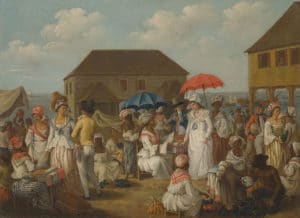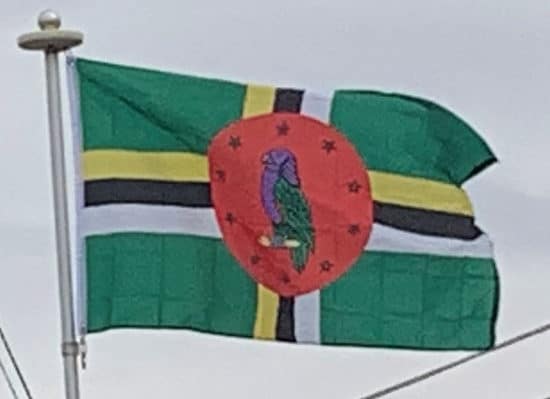In 1660, the French and English agreed that Dominica and St. Vincent should not be settled, but instead left to the Carib as neutral territory. But its natural resources attracted expeditions of English and French foresters, who began harvesting timber. In 1690, the French established their first permanent settlements. French woodcutters from Martinique and Guadeloupe began to set up timber camps to supply the French islands with wood, and they gradually became permanent settlers. They brought the first enslaved Africans from West Africa to Dominique, as they called it in French.
In 1715, a revolt of “poor white” smallholders in the north of Martinique, known as La Gaoulé, caused settlers to migrate to southern Dominique, where they set up smallholdings. Meanwhile, French families and others from Guadeloupe settled in the north. In 1727, the first French commander, M. Le Grand, took charge of the island with a basic French government. Dominique formally became a colony of France, and the island was divided into districts or “quarters”. The French had already developed plantation agriculture on Martinique and Guadeloupe, where they cultivated sugarcane with enslaved African workers. In Dominique they gradually developed coffee plantations. They imported so many African slaves to fill the labour demands that the population became predominantly African in ethnicity.
In 1761, during the Seven Years’ War in Europe, a British expedition against Dominica led by Andrew Rollo conquered the island, along with several other Caribbean islands. In 1763, France had lost the war and ceded the island to Great Britain under the Treaty of Paris. The same year, the British established a legislative assembly, with only European colonists represented. French remained the official language, but Antillean Creole, which had developed from it, was spoken by most of the population.

In 1778 the French, with the active co-operation of the population, began the re-capture of Dominica. This was ended by the Treaty of Paris (1783), which returned the island to British control. But the island population, especially the class of free people of color, resisted British restrictions. The British retained control through French invasions in 1795 and 1805, the first taking place during the period of the Haitian Revolution, which gained the independence of Haiti (formerly Saint-Domingue, France’s richest Caribbean colony).
British Colony:
Great Britain established a small colony in 1805. It used Dominica as part of the triangular trade, by which slaves were imported and sold as labor in the islands as part of a trade that included producing and shipping sugar and coffee as commodity crops to Europe. The best documented slave plantation on the island is Hillsborough Estate, which had 71 male and 68 female slaves. The Greg family were notable: Thomas Hodgson, a brother-in-law, owned a slave ship, and Thomas Greg and his son John Greg were part-owners of sugar plantations on Dominica. In January 1814, 20 slaves absconded from Hillsborough. They were recorded as recaptured and punished with 100 lashes applied to the males and 50 for the females. The slaves reportedly said that one of their people had died in the plantation hospital, and they believed he had been poisoned.
